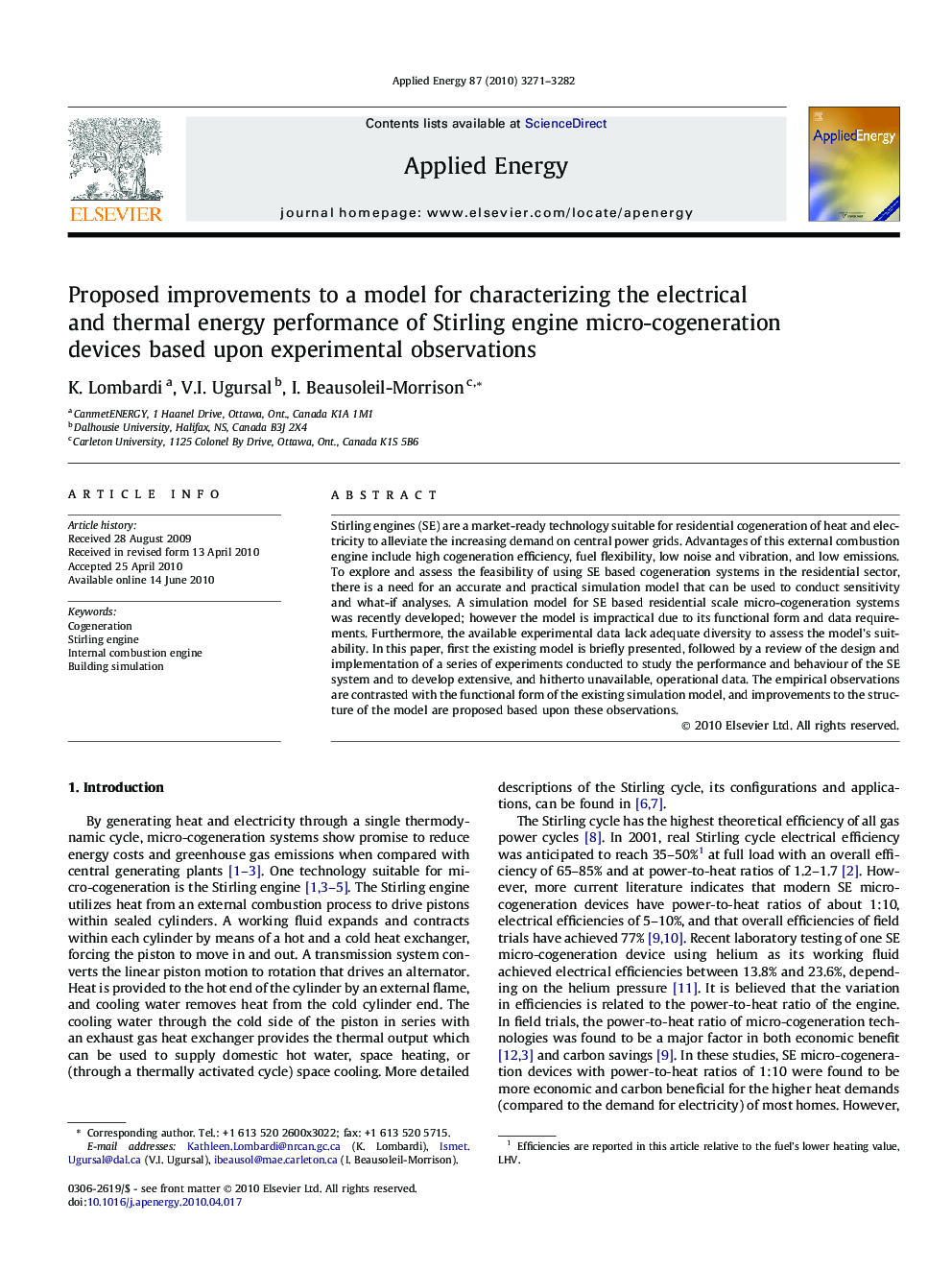| Article ID | Journal | Published Year | Pages | File Type |
|---|---|---|---|---|
| 244078 | Applied Energy | 2010 | 12 Pages |
Stirling engines (SE) are a market-ready technology suitable for residential cogeneration of heat and electricity to alleviate the increasing demand on central power grids. Advantages of this external combustion engine include high cogeneration efficiency, fuel flexibility, low noise and vibration, and low emissions. To explore and assess the feasibility of using SE based cogeneration systems in the residential sector, there is a need for an accurate and practical simulation model that can be used to conduct sensitivity and what-if analyses. A simulation model for SE based residential scale micro-cogeneration systems was recently developed; however the model is impractical due to its functional form and data requirements. Furthermore, the available experimental data lack adequate diversity to assess the model’s suitability. In this paper, first the existing model is briefly presented, followed by a review of the design and implementation of a series of experiments conducted to study the performance and behaviour of the SE system and to develop extensive, and hitherto unavailable, operational data. The empirical observations are contrasted with the functional form of the existing simulation model, and improvements to the structure of the model are proposed based upon these observations.
